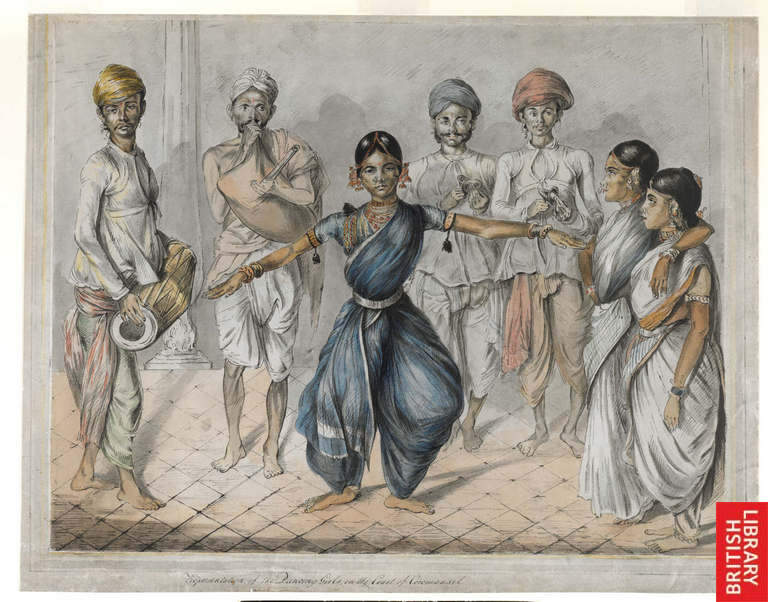
The Indian society has been unforgiving and at the same time rewarding when it comes to women in a rather paradoxical way. While on the one hand we see them as goddesses and worship them in temples, we barely hesitate to rip them apart in the streets on the other. One such example of a system that has latched itself on to the Indians is the Devadasi system. It was mostly prevalent in Tamil Nadu, Maharashtra, Karnataka, Kerala, and Andhra Pradesh. These dancing girls find mention in a number of discourses like the Rig Veda and Atharva Veda, other Hindu mythological texts like the ‘Natya Shastra’ wherein they are said to be created by Brahma, commonly known to us as ‘apsaras’. The Buddhist literature also finds a discussion of ‘Amrapali’ who was devoted to Buddha. In addition, they have secured a place in the Bhakti literature as well. Dancers like Paravi, Manikka Nachiyar, Sangili were praised by Nayanmars in their songs. The Devadasis were also celebrated by the Vaishnavites and Saivites and find an extensive place in the art and architecture by the Vijayanagar and Chola Dynasties. The system can be traced back to the 7th century and although abolished around the time of Indian independence in 1947, still exists in distorted forms.
Devadasi, literally meaning a female servant of god were young girls who were ‘married’ to deities and were expected to live their lives in their devotion. Apart from looking after the affairs of the temples, they learnt scriptures and various dance forms and performed at a number of ceremonies. Considered highly auspicious, they were respected in the society and their presence on occasions like child birth was no less than a blessing. They offered sexual favours to the temple priests and kings and accepted gifts in return in place of money.
The advents of the Mughals, however, was the beginning of the system’s decline, both in practice and in stature. The temples were destroyed and the rulers in support of the system lost power. As the British replaced the Mughals, the privileged Devadasi system was soon reviled with issues arising from their clothes to their body language. Their performances were seen as ‘nautch’ in contrast to a highly regarded ‘nritya’; the term Devadasi became synonymous with prostitute given the objection on moral grounds; the oppression they now faced was more complex. The praxis came to be condemned from two other aspects: caste and class. While in the pre-British era, Devadasis were drawn from almost all sections of the society: the lower and the higher caste, the rich and the poor, the literate and the illiterate, the participation was soon limited to those from the lower ranks in the following period. They came to be seen as nothing but prostitutes who were nowhere close to artists as opposed to the classical and more ‘respectable’ dancers. The sexual favours extended to the common man due to the economic backlash with the system being finally abolished in 1947. They ended up begging outside temples to make a living.
It is mostly the women who face the brunt of the Indians being a superstitious lot. Families gave away their daughters for a number of reasons: those from the lower castes did it to gain respect, some did it to escape the wrath of the deity in the belief that giving away their child would please the lord, and economic necessity. Unfortunately, the system still prevails, with some being a part of it voluntarily to some being pushed into it forcefully. A Devadasi who financially supports her family for most part of her life, finds herself begging for bare necessities when she is no more ‘pleasing’ to the ‘clients’. Young girls who should be educated and empowered are considered objects and thrown in a hellhole to live a life that they can neither comprehend nor signed up for.
It is a question we need to ask ourselves, how many more wasted lives before we get rid of such barbaric practices?